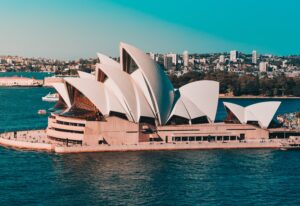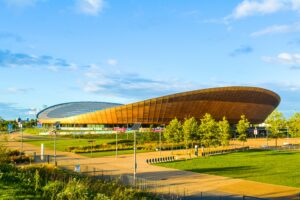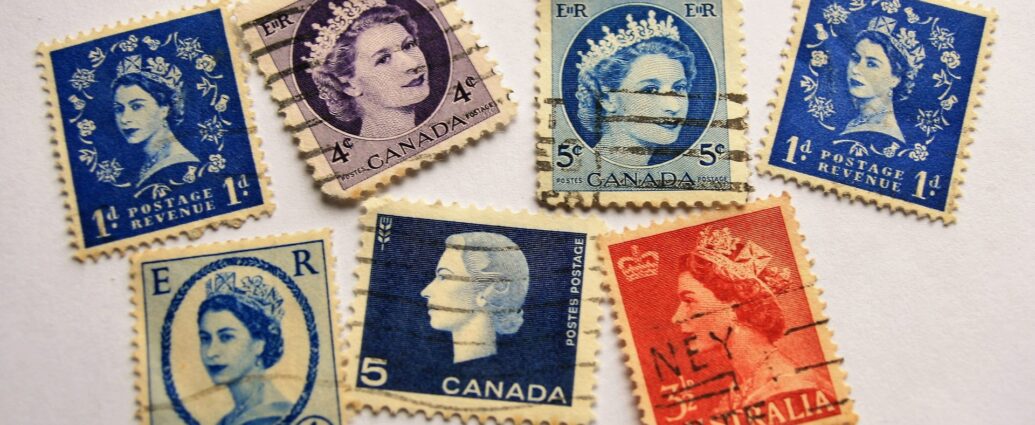Eve Davies
A national icon, intrepid traveller, and loyal monarch: Elizabeth II’s reign, covering wars, natural disasters, and a pandemic, was certainly a spectacular one. We reflect on the key dates and events throughout Her Majesty’s time on the throne.
Elizabeth II’s Coronation
As a travel enthusiast, it is perhaps unsurprising that Elizabeth II was out of the country at the time of her succession. When her father passed away on 6 February 1952, Elizabeth II was a week into a tour of east Africa, Australia, and New Zealand with her husband Philip, the Duke of Edinburgh. She was staying at the Treetops Hotel in Aberdare National Park, Kenya, when she learned about the death of her father but soon returned home.
“‘The crown is not merely an abstract symbol of our unity, but a personal and living bond between you and me.'”
Following royal tradition, Elizabeth II’s coronation took place over a year later. On 2 June 1953, Elizabeth II was crowned queen at Westminster Abbey. This was the first televised coronation service – one of the many firsts Elizabeth II witnessed.
Eager to travel again, the Queen and the Duke of Edinburgh embarked on a six-month tour of the commonwealth on 24 November 1953. In her Christmas broadcast that year, which was recorded in Auckland, New Zealand, Elizabeth II stated: “I set out on this journey in order to see as much as possible of the people and countries of the Commonwealth and Empire. I want to show that the Crown is not merely an abstract symbol of our unity, but a personal and living bond between you and me.”
1960s: Travelling
Elizabeth II became a mother of three on 19 February 1960 after the birth of Andrew, making her the first reigning British monarch to give birth since 1857. She gave birth to her other children – Charles on 14 November 1948 and Anne on 15 August 1950 – before becoming monarch. Her fourth child, Edward, was born on 10 March 1964.
Overriding tensions, in May 1965, Elizabeth II visited West Germany, making her the first British monarch to do so since the first world war.
Two years later, in September 1967, she launched the Cunard cruise liner called the Queen Elizabeth II, which is popularly known as the QE2.
Advancing with the times, June 1969 saw the first broadcast of Royal Family, a documentary with unprecedented access to the family’s daily life.
1970s: Elizabeth II’s Silver Jubilee
This decade saw the Queen travel more extensively. She took her first walkabout during a state visit of Australia and New Zealand in April 1970 and opened Jørn Utzon’s Sydney Opera House in October 1973.

June 1977 was a month of celebrations for her silver jubilee. More than a million people lined the streets of London, and a chain of beacons was lit across the country. Later that year, Elizabeth II became a first-time grandmother as her daughter Anne gave birth to Peter on 15 November.
1980s: Danger to Elizabeth
This decade ignited a turbulent period for Elizabeth II. Blank shots were fired at her while attending Trooping the Colour. Marcus Serjeant, a 17-year-old air cadet from Folkestone pleaded guilty under the 1842 Treason Act and was jailed for five years.
Chaos ensued on 9 July 1982 when Michael Fagan broke into the Queen’s bedroom during the early hours, evading alarms, guards, and police. He was said to have sat on the edge of her bed for ten minutes before being led away by footman Paul Whybrew and arrested.
1990s: The loss of Diana
“One of the most disputed royal events of all time”
The nineties saw what has become one of the most disputed royal events of all time – the separation of Charles and Diana, and Diana’s subsequent death. The first instalment of the serialisation of Andrew Morton’s book Diana: Her True Story appeared in the Sunday Times on 7 June 1992. This publication discussed Charles’ affair and Diana’s psychological struggles.
Months later, on 20 November 1992, Windsor Castle was partly destroyed by fire. The following day the Queen gave a speech at Guildhall to mark the 40th anniversary of her accession, in which she referred to recent events as part of an “annus horribilis”. Buckingham Palace was opened to the general public for the first time in April 1993 to help fund the restoration of Windsor Castle.
Some positivity came in May 1994 when Elizabeth II and the French President, François Mitterrand, formally opened the Channel Tunnel during two elaborate ceremonies in France and Britain. After travelling through the tunnel, which took eight years and billions of pounds to build, the Queen said it was one of the world’s great technological achievements.
On 26 May and 1 July 1999, the Queen opened the national assembly in Wales and the Scottish parliament respectively.
2000s: Elizabeth becomes the oldest reigning monarch
Despite the deaths of her sister and mother in February and March 2002 respectively, Elizabeth II attended all official celebrations for her golden jubilee beginning in April that year. Over twelve months, the royal couple journeyed more than 40,000 miles to the Caribbean, Australia, New Zealand, then around the United Kingdom, and wrapped up the jubilee year in Canada.
Having celebrated her 80th birthday on 21 April 2006 and 60th wedding anniversary on 19 November 2007, by December 2007 Elizabeth II surpassed Victoria to become the UK’s oldest reigning monarch.
“When life seems hard, the courageous do not lie down and accept defeat; instead, they are all the more determined to struggle for a better future.” – Queen’s Christmas speech 2008.
2010s: Opening the Olympics

June 2012 saw events throughout the country to celebrate Elizabeth II’s diamond jubilee, including a pageant of 670 boats sailing down London’s Thames and the establishment of The Queen Elizabeth Diamond Jubilee Trust. A month later the Queen opens the London Olympics, making a memorable appearance in her first acting role. A film was shown during the ceremony in which Elizabeth II leaves Buckingham Palace with James Bond, played by Daniel Craig, and parachutes into Stratford stadium.
“Elizabeth II became the first British monarch to commemorate a sapphire jubilee”
On 25 April 2013 Elizabeth II granted royal assent to the Succession to the Crown Act 2013 so that the eldest child could inherit the throne regardless of gender.
By early 2017, Elizabeth II became the first British monarch to commemorate a sapphire jubilee.
“It’s worth remembering that it is often the small steps, not the giant leaps, that bring about the most lasting change,” said Elizabeth II during her Christmas speech in 2019.
2020s: Elizabeth II’s Platinum Jubilee
As a precaution when the coronavirus hit the UK, Elizabeth II and Prince Philip moved to Windsor Castle to sequester. Public engagements were cancelled, and the castle followed a strict sanitary protocol. On 5 April 2020, Elizabeth II gave a rare, televised address to the nation. She thanked her subjects for following lockdown rules, praised key workers, and reassured people “better days will return”.
Elizabeth II lost her husband Prince Philip on 9 April 2021. He passed away peacefully at the age of 99 at Windsor Castle with the Queen at his side. Following Covid regulations, Elizabeth II attended his funeral by herself.
The Queen’s platinum jubilee celebrations took place in early June 2022. She crowned the historic celebrations with a last-minute appearance on the balcony of Buckingham Palace.
Working up until two days before her death, Elizabeth II appointed the 15th prime minister of her reign, Liz Truss. Breaking from tradition due to her ongoing mobility issues, this took place at Balmoral Castle.
“I know of no single formula for success, but over the years I have observed that some attributes of leadership are universal and are often about finding ways of encouraging people to combine their efforts, their talents, their insights, their enthusiasm and their inspiration, to work together,” said Elizabeth II during an address to the United Nations General Assembly.
Featured image courtesy of pasja1000 on Pixabay. Image license can be found here. No changes were made to this image.

